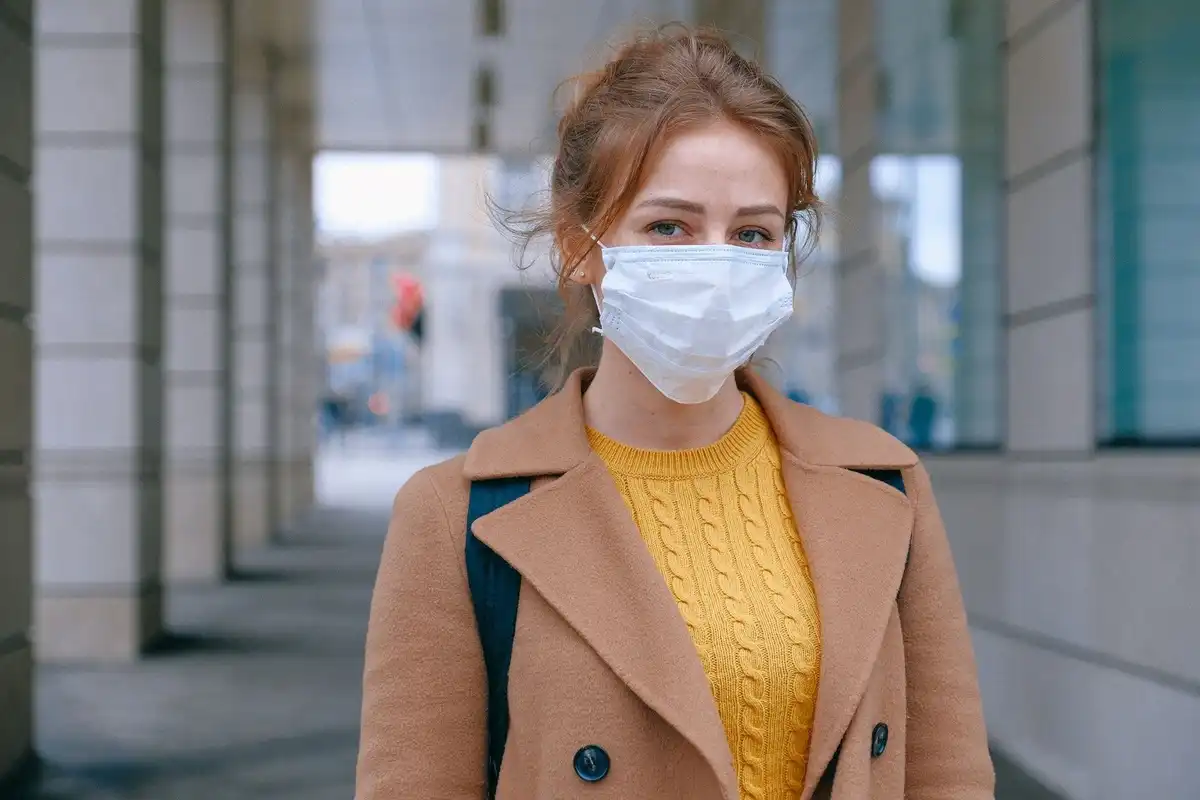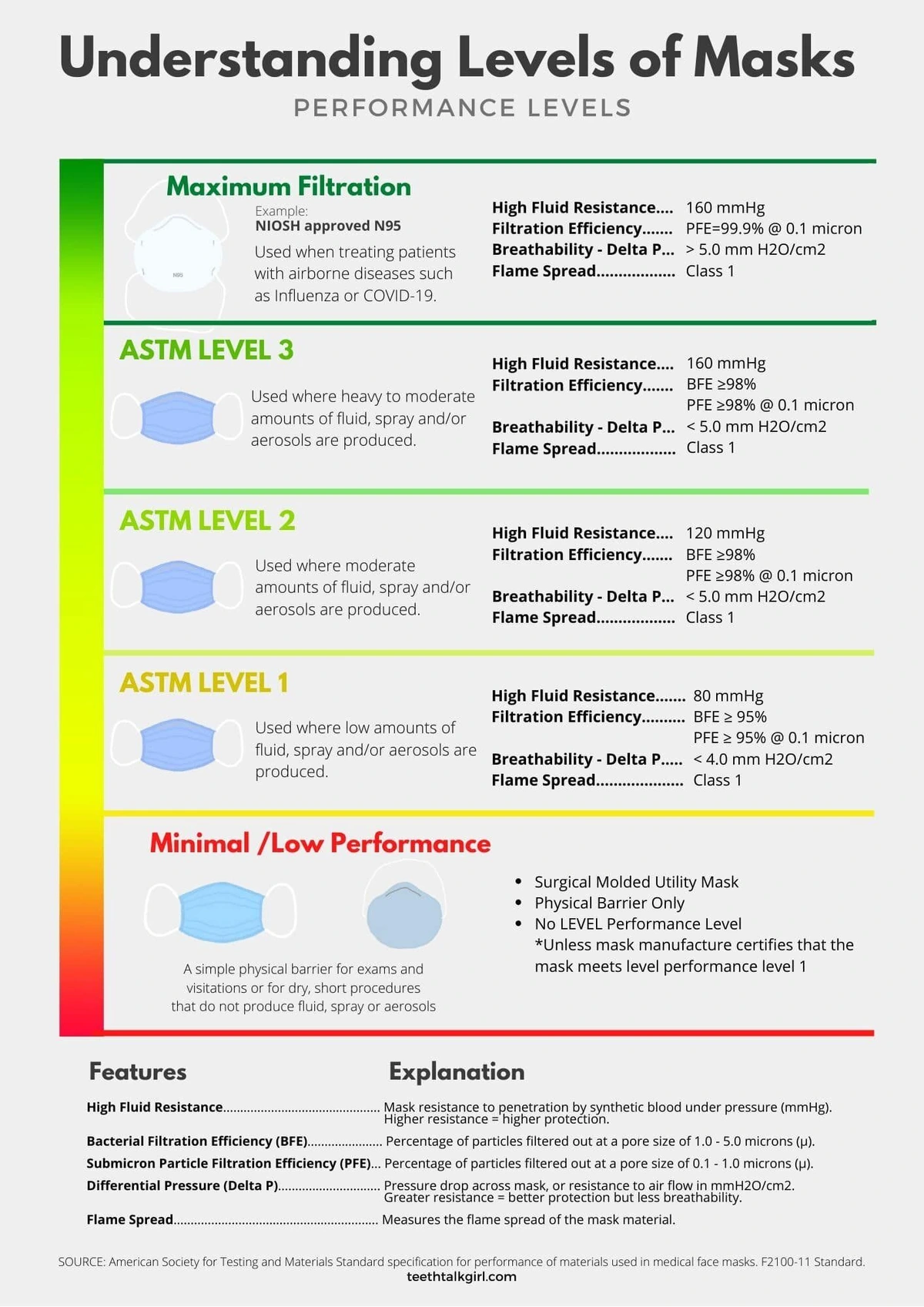Which Mask Protects You From COVID-19?


Please keep in mind that the information below is time-sensitive due to the ever-evolving situation of COVID-19. So, please please please take it upon yourself to stay current and up-to-date as things continue to change in the weeks and months to come. Check for updates here https://www.coronavirus.gov/ .
Prior to COVID-19, it was uncommon for non-healthcare workers to wear masks. However now during the COVID-19 pandemic, the CDC has advised us all to wear masks in public places where it’s difficult to practice social distancing. Although many people are interested in wearing surgical and/or N95 respirator masks, those are not recommended. The cloth homemade masks are recommended. This is because there is a shortage in surgical and respirator masks (needed for healthcare providers and symptomatic patients). So, we all need to do our part and save those masks for the individuals who need them. N95 respirator vs. surgical vs. face covering, which mask is the best?

Homemade Face Masks
The CDC recommends wearing one disposable mask underneath a cloth mask that has multiple layers of fabric. The second mask should push the edges of the inner mask against the face and beard. Although homemade face masks do not offer a large degree of protection, they may however help prevent the spread of COVID-19 from asymptomatic people when doubled up with a surgical mask underneath.
Cleaning Homemade Face Masks:
After each use, make sure you are washing your hands with soap and water for 20 seconds after you remove the mask and then wash the face mask itself (with soap and water). After washing the face mask, wash your hands again.
Surgical Face Masks
These are recommended for symptomatic patients and they are the minimal mask requirement for healthcare workers. There are many different designs and shapes of surgical face masks. Just because two masks may appear to be the same…does not mean they are the same.
The ASTM scale, the American Society for Testing and Materials, is what specifies the performance requirements within basic criteria for surgical masks, such as BFE (bacterial filtration efficiency), PFE (particulate filtration efficiency), fluid resistance, pressure differential, and flame spread. This scale is intended to help healthcare providers determine which mask type is best for the situation. This scale was used prior to the COVID-19 pandemic. Now during the pandemic, most healthcare workers (especially dental hygienists, dental assistants, and dentists) are encouraged to wear respirator masks. Dental providers are said to be at very high risk - due to heavy aerosol production and being in close proximity to potentially asymptomatic patients.
Surgical Mask Information: All surgical masks need to be cleared by the US food and drug administration (FDA).
Level 1 Surgical Masks (Low Barrier Mask):

Level 1 is low barrier and it’s intended for procedures where minimal amounts of fluid, spray and/or aerosols are produced. Remember that it should clearly state the ASTM level of the mask on the box. Because all flat surgical masks look similar, you will only know what level it is by reading the box.
Level 2 Surgical Masks (Light/Moderate Fluid Resistance):

These masks are considered to have moderate fluid resistance and are ideal for procedures where light to moderate amounts of fluid, spray and/or aerosols are being produced.
Level 3 Surgical Masks (Moderate/Heavy Fluid Resistance):

These masks are intended for procedures where moderate to heavy amounts of fluid, spray and/or aerosols are being produced. Level 3 was the standard PPE for dental professionals using heavy aerosols, prior to COVID-19. However, now during the current pandemic, higher level masks are being recommended for dental professionals, such as respirator masks. There are conversations that these higher level masks may continue to be recommended for dental hygienists post-pandemic.
Respirator Masks (Maximum Filtration NIOSH Approved N95)

The highest level mask with maximum filtration is called a particulate respirator. There are different types of respirators such as the N95 (that I’m sure you’ve heard about) as well as the KN95, FFP2, P2, Korea 1st Class, and DS. Respirators have different names depending on the country they are cleared for use. In the United States, the N95 respirators need to be evaluated, tested and approved by the National Institute for Occupational Safety and Healthy (NIOSH).
Understanding Masks (Minimal/Low Performance)
The most confusing part about masks is that although the shapes may appear similar - they may in fact still be different types of masks! For example, the plain cone shaped masks (utility masks) are generally the lowest performing mask and they happen to resemble the respirator masks (N95) which are used for maximum filtration. Unfortunately, there are people thinking these two masks are the same when they are not at all the same. They are at opposite ends of the filtration scale.

So, please remember that just because two masks may look the same…it doesn’t mean they are the same. You MUST check the box it was packaged in to find out which level mask it is.
Which Is The Best Mask For Coronavirus Protection
In conclusion, both surgical and respirator masks are NOT recommended for healthy, non-healthcare providers at this time. If you are not experiencing COVID-19 symptoms and you have not been exposed to COVID-19, please continue using your homemade face masks. The N95 respirator mask offers the highest level of protection with maximum filtration. There is a shortage in both surgical and N95 respirator masks for those who need them, including healthcare workers and unhealthy individuals. So stay healthy by continuing to wash your hands, distance yourself from others, and by wearing a cloth mask when you are unable to distance yourself.

Resources:
Center for Devices and Radiological Health. (n.d.). N95 Respirators and Surgical Masks (Face Masks). Retrieved May 12, 2020, from https://www.fda.gov/medical-devices/personal-protective-equipment-infection-control/n95-respirators-and-surgical-masks-face-masks
Center for Devices and Radiological Health. (n.d.). N95 Respirators and Surgical Masks (Face Masks). Retrieved May 13, 2020, from https://www.fda.gov/medical-devices/personal-protective-equipment-infection-control/n95-respirators-and-surgical-masks-face-masks
COVID -19 Toolkit. (n.d.). Retrieved May 13, 2020, from https://www.osap.org/page/COVID-19
Dental Settings. (2020, May 03). Retrieved May 13, 2020, from https://www.cdc.gov/coronavirus/2019-ncov/hcp/dental-settings.html
How to Protect Yourself & Others. (2020, April 24). Retrieved May 13, 2020, from https://www.cdc.gov/coronavirus/2019-ncov/prevent-getting-sick/prevention.html
PDF [Infographic - Understanding the Difference, Surgical Mask, N95 Respirator]. (n.d.). Centers for Disease Control and Prevention. https://www.cdc.gov/niosh/npptl/pdfs/UnderstandDifferenceInfographic-508.pdf
Recommendation Regarding the Use of Cloth Face Coverings. (2020, April 03). Retrieved May 13, 2020, from https://www.cdc.gov/coronavirus/2019-ncov/prevent-getting-sick/cloth-face-cover.html
Strategies for Optimizing the Supply of Facemasks: COVID-19. (2020, March 17). Retrieved May 13, 2020, from https://www.cdc.gov/coronavirus/2019-ncov/hcp/ppe-strategy/face-masks.html

Make your inbox smile!






